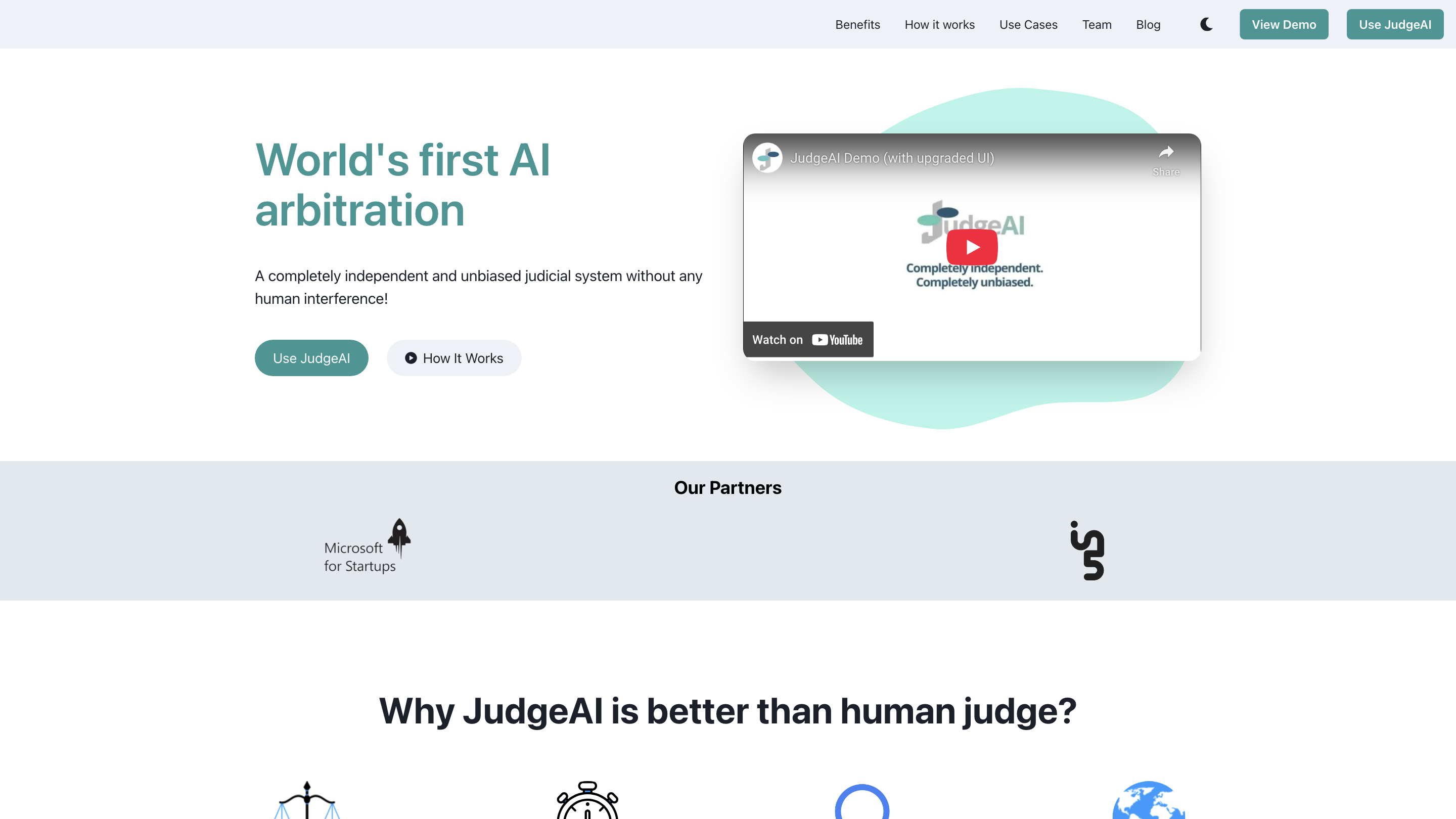JudgeAI
Open siteLegal & Finance
Introduction
Unbiased AI system for automating judicial proceedings
JudgeAI Product Information
JudgeAI is an autonomous, AI-driven arbitration platform that claims to be the world's first completely independent and unbiased judicial system without human interference. It operates on a multi-stage process using specialized legal algorithms designed to evaluate evidence and render judicial decisions. The system emphasizes independence from pre-trained data, relying on proprietary algorithms to ensure accuracy and validity in economic dispute resolutions.
How JudgeAI Works
JudgeAI follows seven stages in processing a claim:
- Analysis of the claim and evidence – performs a formal validity check; invalid claims are rejected early. Identifies all evidence and facts used by the claimant.
- Request for the defendant's objections – solicits objections; invalid objections lead to automatic grant of the claim. Valid objections trigger counter-arguments and potential calls for additional evidence.
- Clarification of the claim – if needed, requests a clarified statement of claim or additions to prepare the final case narrative.
- Analysis of the defendant's additions – asks for additional materials from the defendant to complete the case picture.
- Formation of the case narrative – constructs a complete narrative using collected facts and evidence, applying fuzzy logic to evaluate direct and indirect facts and their interrelations.
- Modeling ideal behavior of the parties – evaluates how parties should have behaved under ideal conditions (contract terms, business customs, legal principles) using Nash equilibrium to assess strategies.
- Formation of the final decision – compares actual behavior with the ideal model, analyzes deviations for Nash compliance, potential damages, and impact on contract terms; the decision is documented with full justification.
Key characteristics:
- Does not rely on codified law or judicial precedents for core reasoning (though variants exist that use precedents).
- Focuses on economic disputes, equating fairness with Nash equilibrium in those contexts.
Applications
- Automated Judicial Processing: Automates procedural and administrative tasks to promote consistency and unbiased case management.
- Litigation Perspective Analysis: Uses proprietary AI workflows to analyze evidence and arguments to predict outcomes and guide strategy.
- Fair Settlement Calculation: Computes fair settlements through algorithmic interpretation of legal frameworks and dispute specifics.
- Codified Legal Judgments: Streamlines process to ensure impartial case management aligned with codified law.
How to Use JudgeAI
- Access the interactive demo to understand workflow and capabilities.
- Submit a claim and supporting evidence to undergo the seven-stage process.
- Review the final decision, its justification, and any reported deviations from the ideal behavior model.
Safety and Considerations
- The system aims to be independent from human judges and lawmakers, which may raise questions about governance, accountability, and applicability across different jurisdictions.
- It is designed for economic disputes; non-economic disputes may require alternative models for fairness.
Leadership Team
- Yuri Kozlov — CEO
- Taaha Bajwa — CTO
- Maria Shutova — CPO
Access and Contact
- Official Demo and FAQs available; contact via [email protected] or official LinkedIn page.
Core Features
- Independent, automated judicial system focused on economic disputes
- Seven-stage procedural pipeline: claim analysis, objections, clarifications, evidence review, narrative formation, ideal behavior modeling, final decision
- Proprietary, non-pretrained-data-based algorithms for evidence evaluation
- Nash equilibrium-based fairness assessment
- Automated litigation analytics: outcome prediction and strategy guidance
- Fair settlement calculations and codified-judgment-like processing
- Multijurisdictional considerations via adaptable algorithms
- Transparent decision narratives with step-by-step justification
